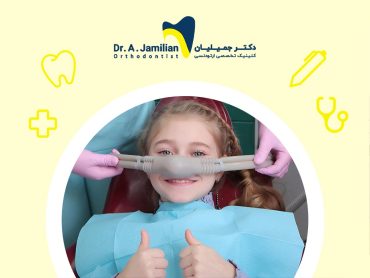Tongue sucking in children happens when the child is at rest, talking, or swallowing and putting pressure on the back or between the teeth. Some children do not properly use the muscles of the mouth, jaw, face, and lips. Based on therapists, this condition is called Orofacial Myofunctional Disorders (OMD). Tongue sucking is the most common type of the disease, causing speech and dental problems in children. Infants push their tongue forward to swallow food, and most children naturally learn how to swallow by the age of six. If this learning does not happen at this age, the child will continue to place the tongue between his/her teeth of the jaws to swallow.
Complications of Tongue Sucking in Children
The pressure put by children between the teeth of the two jaws while sucking the tongue causes incorrect swallowing and speech. If this disorder persists, it may have a devastating effect on a child’s teeth growth and oral health.

Symptoms of Tongue Sucking Disease
When the child has tongue sucking or tongue slipping, his/her tongue may come out of the teeth when swallowing, resting, and speaking. Moreover, it may have one or more of the following symptoms:
- Improper placement of the tongue in resting position
- Lips opened
- Speech problems
- Food chewing problems
- Incidence of maxillofacial malformations and the need for orthodontic treatment
- Habit of long tongue-sucking
- Creation of an open bite
The best time to go to a specialist
In children up to the age of six, slipping or sucking the tongue is perfectly normal. However, in case that your child gets out of their teeth while talking, swallowing, and resting their tongue, you should visit an orthodontist. If your child is over five years old and has problems in the mentioned cases, he/she must be examined by an orthodontist. Children’s anterior teeth of the upper and lower jaws are dislocated by sucking the tongue, causing jaw deformities like increased open bite or overjet.
The reason for tongue-sucking disease
Many speech therapists believe that tongue sucking takes place due to the following reasons.
- Prolonged sucking of the thumb or other fingers
- The existence of fear and stress in the child
- Prolonged chewing of nails
- Hereditary backgrounds in the family
- Physical or structural disorders of the tongue, cheeks, and lips
- Neurological or growth problems
Tests and diagnosis of tongue-sucking in children
Diagnosis of thrush due to tongue-sucking should be made by a dentist, orthodontist, physician, or speech pathologist. These steps should be carried out by performing speech, swallowing tests, and carefully examining the position of the jaw and teeth.

correction of tongue sucking in children with orthodontic appliances
Tongue-sucking treatments
Speech therapists, speech language pathologists, and orthodontists are among the specialists able to correct the tongue sucking and slipping problems. The child should first be evaluated by these specialists in order for them begin an appropriate treatment program. The duration of treatment by the speech therapist is usually ten 30-minutes sessions. Moreover, depending on the orthodontist’s diagnosis and the severity of the abnormality, the duration of orthodontic treatment will vary.
The child learns the proper position for mouth rest and how to swallow food and fluids when sucking. These activities should be also continued at home. Keep in mind that doing the right exercises and following them at home enhances your successful treatment chance.
The role of the orthodontist in the tongue-sucking treatment
In some circumstances, the patient suffering from thrush due to tongue sucking should be visited by a dentist or orthodontist. In most cases, prolonged tongue-sucking leads to increased dental abnormalities like overjet and open bite. In this situation, the orthodontist changes the position of the patient’s teeth to a standard position with the help of removable orthodontics or a fixed orthodontic appliance. Moreover, you can get the right orthodontic appliance from an orthodontist to prevent your baby’s tongue-sucking.
Tongue Sucking FAQ
Sucking and pulling the tongue on the teeth may be one of the symptoms of patients with anxiety, especially emotional stress, when being a child.
An orthodontist may prevent finger sucking with a simple mobile device called habit breaker.
Tongue slippage is normal in breastfed or bottle-fed infants; his/her swallowing and speech patterns will develop as the baby gets older.
The proper position of the tongue is when the tongue is gently on the roof of the mouth and away from the teeth. The lips should be closed and the teeth should be slightly apart when resting.
Tongue sucking correction ends with orthodontic treatments. This pattern is usually done in two ways: 1) tongue exercise or tongue therapy 2) using devices placed in the mouth by an orthodontist.
In case that the pacifier is continuously used, it will create a permanent pattern for the infant or child, causing dental problems in the jaw and may further cause the tongue sucking and slippage.







